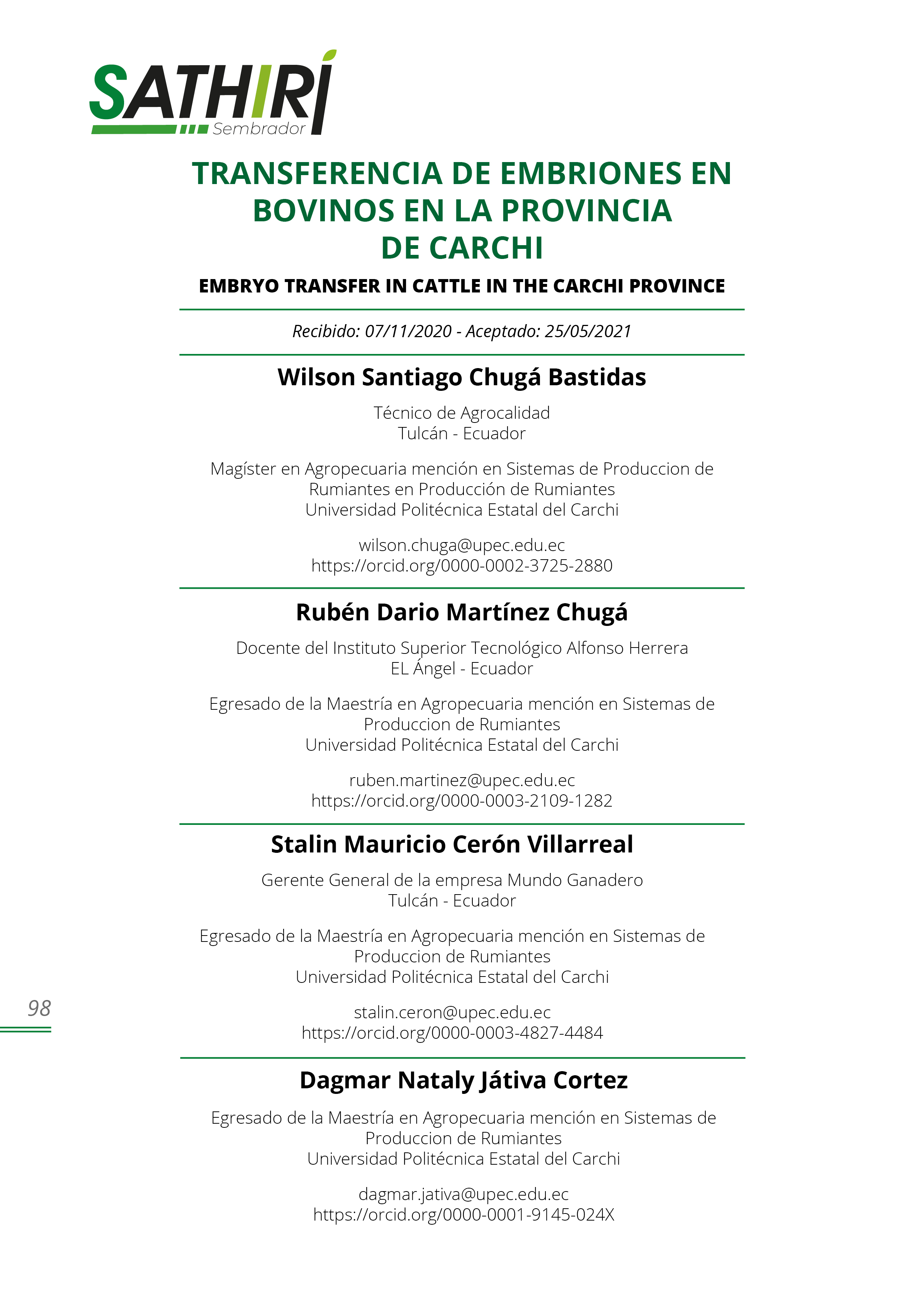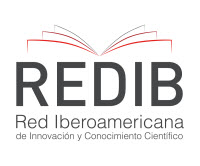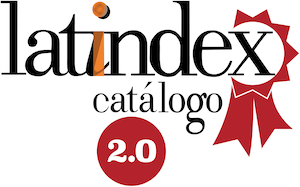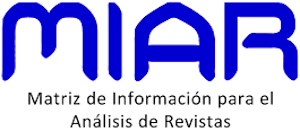Embryo transfer in cattle in the Carchi province
DOI:
https://doi.org/10.32645/13906925.1075Keywords:
Superovulatory, protocol, embryos, synchronizationAbstract
The Superovulatory response and the conception rate were evaluated by applying the non-surgical technique of embryo transfer in heifers, from the Santa Clara and San Francisco farms in the province of Carchi. A donor cow of high genetic value was chosen, the same one that was subjected to super-ovulation, through the application of a hormonal protocol for seven days, from day eight the application of the protocol for synchronization of estrus was started, to day ten insemination is done. The selection of eight vaconas was done, the same ones that were prepared to serve as recipients, the synchronization protocol lasted ten days, the application of the protocols was programmed to synchronize the donor with the receivers. On the fifteenth day, the embryos were extracted by washing, the same day in the laboratory the viable embryos were selected, obtaining as a result two with the quality characteristics, they were prepared and transferred immediately in the heifers, which after the gynecological check they were chosen as receivers (Adela) of Santa Clara farm and (Gema) of San Francisco farm.
References
Becaluba, F. (2007). “Factores que afectan la superovulación en bovino” Especialista en Reproducción, Bs. As., Argentina.
Bó GA, Baruselli PS, Chesta PM, Martins CM. 2006. The timing of ovulation and insemination schedules in superstimulated cattle. Theriogenology; 65:89-101.
Colazo, M. G., & Mapletoft, R. J. 2007. Estado actual y aplicaciones de la transferencia de embriones en bovinos. Ciencia Veterinaria, 9(1), 20–37.
Díaz R, Rengifo O, Almeyda J. 2012.Técnica de multiovulación y transferencia de embriones de ganado bovino en condiciones de trópico del Perú. Agro Innova 13: 18-23.
Duica, A. A., Tovío, N. L., & Grajales, H. L. 2007. Factores que afectan la eficiencia reproductiva de la hembra receptora en un programa de transplante de embriones bovinos. Revista de Medicina Veterinaria No, 14(14), 107–124. https://doi.org/10.19052/MV.1805
Garzón, N., Urrego, R., & Giraldo, C. A. 2007. Algunos factores que afectan los tratamientos de superovulación en la transferencia de embriones bovinos. Revista CES, 2(2), 68–77.
Jiménez, C. 2009. Superovulación: Estrategias, factores asociados y predicción de la respuesta superovulatoria en bovinos. Revista de Medicina Veterinaria y Zootecnia, 56, 195–214.
Kanagawa H, Shimohira I, Saitoh N. 1995. Manual of bovine embryo transfer. Japan: Japan Livestock Technology Association. 432 p.
Naranjo-Chacón, F., Becerril Pérez, C. M., Canseco-Sedano, R., Zárate Guevara, O. E., Soto-Estrada, A., Rosales Martínez, F., & Rosendo Ponce, A. 2016. Comparación de dos métodos de transferencia de embriones en el ganado criollo lechero tropical. Ecosistemas y Recursos Agropecuarios, 3(7), 113–120.
Ochoa, Rafael. 2006. TRANSFERENCIA DE EMBRIONES EN VACUNOS DE LECHE. Redalyc.
Palma y Brem. 1993. Biotecnología de la Reproducción. Libro Azul. http://www.reprobiotec.com › libro_azul › cap_01
Requelme, N., & Bonifaz, N. 2012. Caracterización de sistemas de producción lechera de Ecuador. LA GRANJA, Revista de Ciencias de La Vida, 15(1), 56–69. https://doi.org/10.17163/lgr.n22.2015.02
Moor, RM, Kruip, THAM, Greed, D, 1984. Intraovarian control of folliculogenesis: Limits to superovulations.

Downloads
Published
Issue
Section
License
Copyright (c) 2021 Wilson Santiago Chugá Bastidas, Rubén Dario Martínez Chugá, Stalin Mauricio Cerón Villarreal, Dagmar Nataly Játiva Cortez, Brayan Chamorro Pantoja , Gladys Yesenia Chirán Ayala, Luis Rodrigo Balarezo Urresta, Miguel Augusto Proaño Deleg

This work is licensed under a Creative Commons Attribution-NonCommercial-NoDerivatives 4.0 International License.
El autor mantiene los derechos morales e intelectuales de su obra, autorizando a la editorial de la revista Sathiri la difusión y divulgación de su contenido con fines estrictamente académicos y de investigación, sin fines de lucro. Así mismo, se autoriza que la obra sea descargada y compartida con otras personas, siempre y cuando no sea alterada y se reconozca su autoria.




















